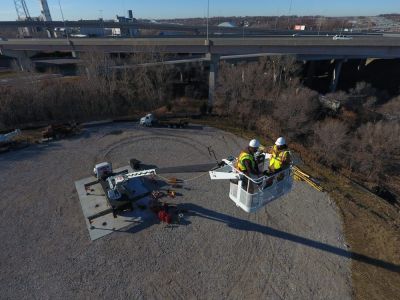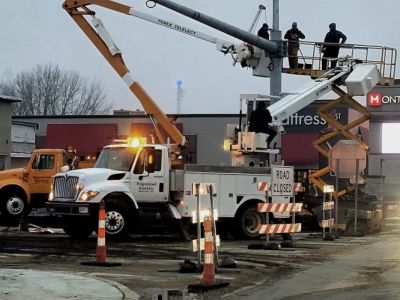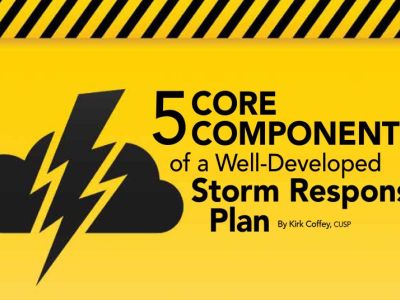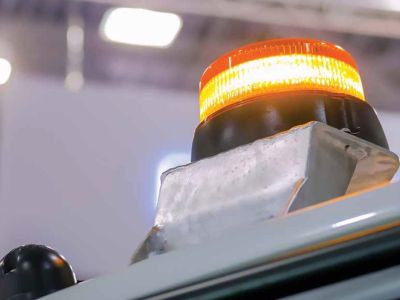
The Latest Developments in Aerial Equipment Safety
Efforts to improve aerial work platform safety have fueled multiple recent technological innovations now available for use by utility organizations. Among the critical features found in modern bucket trucks are collision-mitigation systems and reverse sensors and camera systems, according to Chris Shallenberg, national sales manager for PALFINGER North America (www.palfinger.com). “These features ensure the vehicle […]

Traffic Control Done Right: Best Practices for Utility Work Zones
Electric utility crews face many risks when working near traffic. Due to the numerous variables that they assess and manage, crews must understand how the job, location, equipment and people will interact on the worksite to achieve optimal safety and efficiency. The Manual on Uniform Traffic Control Devices (MUTCD), produced by the Federal Highway Administration […]

Q&A: From Farm to Fleet and Beyond With Matt Gilliland
Matt Gilliland didn’t plan on a career in fleet management. Growing up on a Nebraska farm and later working in his father’s repair shop, he developed mechanical skills that would prove invaluable in fleet. But his initial path led elsewhere, from political science studies to social services work. Then came December 2006. Gilliland was at […]

Top 5 Fleet Electrification Trends to Watch in 2026
Two years ago at NTEA’s Work Truck Week, electric vehicles dominated the conversation. Every OEM touted its electrification solutions. The message was clear: the future is all-electric, and it’s happening now. Fast-forward to today and the picture looks different. “It’s clear the EV market is not where it was just two years ago,” said Jeremy […]

Preventing Maintenance Shop Injuries: Practical Guidance for Utility Fleets
In a busy maintenance shop, even a small misstep can lead to injury. Common hazard mitigation tactics include shop safety protocols, signage, and training and personal protective equipment for employees. But once a fleet manager checks those boxes, is there more they can do? To find out, UFP spoke with Jeffrey James Neal, fleet maintenance […]

Cultivating a Healthy Fleet Safety Culture
An ideal utility fleet safety program will account for fleet’s distinct operating environment. Why? “The fleet group is totally different than what a lot of utility workforces do,” explained Matt Gilliland, director of operations support and business continuity for Nebraska Public Power District (NPPD). “We work on a variety of different equipment, and it’s very […]

5 Core Components of a Well-Developed Storm Response Plan
Electric utilities are part of the backbone of modern society, providing essential power to homes, businesses, emergency services providers and more. But this critical service is vulnerable to extreme weather events that can cause massive disruptions, damage infrastructure and jeopardize public safety. Due to the frequency and severity of such events, it is more important […]

ATSSA’s 2026 Convention Heads to Houston
From February 20-24, thousands are expected to gather at the George R. Brown Convention Center in Houston for the American Traffic Safety Services Association’s 56th Annual Convention & Traffic Expo. Billed as the premier North American event for the roadway safety infrastructure industry, attendees can expect to explore the latest developments in relevant devices, vehicles, […]
A Farewell and Thank You
This issue marks the end of my tenure as editor of Utility Fleet Professional magazine. After a decade of serving this incredible community, I’m retiring from the editorial world to pursue my next chapter. It’s been an honor. Before joining UFP, I spent years selling GM and Isuzu medium-duty trucks, ranking among the top 25 […]

Spec’ing Strobe Lights for Utility Trucks
Strobes and beacons play a critical role in both worker and public safety, increasing vehicle visibility during roadside operations. But they aren’t all created equal, which means fleet managers must weigh several factors when spec’ing these lights. First, define vehicle use and environment. Consider the primary functions and operating conditions of your fleet. Then, strategize […]

